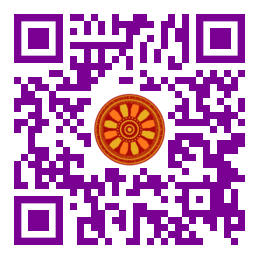
:: International Transaction Journal of Engineering, Management, & Applied Sciences & Technologies
http://TuEngr.com

ISSN 2228-9860
eISSN 1906-9642
CODEN: ITJEA8
FEATURE PEER-REVIEWED ARTICLE
Vol.13(1) (2022) |
Organizational Backstabbing Techniques
 Davood Heidari Azim (Faculty of Management, University of Tehran, IRAN),
Davood Heidari Azim (Faculty of Management, University of Tehran, IRAN),
Seyedeh Leila Hakemzadeh (Faculty of Entrepreneurship, University of Tehran, IRAN).
Disciplinary: Management Sciences (HRM).
Keywords: Human Resources, Grounded theory, backstabbing, Anti-citizenship, Anti-social behavior
AbstractDestructive behaviors directed by one employee against another are common occurrences in the workplace. One type of these anti-citizenship behaviors is Organizational Backstabbing. We've probably been backstabbed at our workplaces many times, and sometimes we may have backstabbed others. These behaviors can have adverse consequences on the career path of employees and organizational results. The study can help managers make better decisions, in the face of these behaviors. This research is an interpretive study and the data are collected using the interview method and analyzed based on Grounded Theory (GT). The data were coded by WEBQDA software, and we identified thirty initial codes. The results suggest eight categories of Organizational Backstabbing Techniques. The eight techniques of Organizational Backstabbing are Simple destruction, combined destruction, Two-way destruction, Bad defense, Performance barrier, Trapping, Press on the hot spot, and Machine gun. This study will help to evaluate these types of behaviors by an in-depth review of Organizational Backstabbing literature.Paper ID: 13A1A
Cite this article:
Davood, H.A., Seyedeh, L.H. (2022). Organizational Backstabbing Techniques. International Transaction Journal of Engineering, Management, & Applied Sciences & Technologies, 13(1), 13A1A, 1-10. http://TUENGR.COM/V13/13A1A.pdf DOI: 10.14456/ITJEMAST.2022.1
References
- Allan, G. (2003). A critique of using grounded theory as a research method. Electronic Journal of Business Research Methods, 2(1), 1-10. Doi: 10.1.1.129.9102
- Aquino, K., & Douglas, S. (2003, January). Identity threat and antisocial behavior in organizations: The moderating effects of individual differences, aggressive modeling, and hierarchical status, Organizational Behavior and Human Decision Processes, 90(1), 195-208.
- Brenner, S. N., & Molander, E. A. (1977). Is the ethics of business changing? Harvard business review, 55, 57-71. Retrieved from https://scholar.google.com.
- Harvey, J. B. (1989). Some Thoughts about Organizational Backstabbing: Or, How Come Every Time I Get Stabbed in the Back My Fingerprints Are on the Knife? The Academy of Management Executive, 3(4), pp. 271-277. doi: 10.5465/ame.1989.4277398
- Jelinek, R., & Ahearne, M. (2006, May ). The ABC's of ACB: Unveiling a clear and present danger in the sales force. Industrial Marketing Management, 35(4), 457-467.
- Kaukiainen, A., Salmivalli, C., Björkqvist, K., Österman, K., Lahtinen, A., Kostamo, A., & Lagerspetz, K. (2001, September 25). Overt and covert aggression in work settings in relation to the subjective well-being of employees. Aggressive behavior, 27(5), 360-371. doi: 10.1002/ab.1021
- Lincoln, D. J., Pressley, M. M., & Little, T. (1982). Ethical beliefs and personal values of top-level executives. Journal of Business Research, 10(4), pp. 475-487. doi: 10.1016/0148-2963(82)90006-6
- MacKenzie, S. B., & Podsakoff, P. M. (1998, Jul). Some Possible Antecedents and Consequences of In-Role and Extra-Role Salesperson Performance. Journal of Marketing, 62, 87-98. doi: 10.2307/1251745
- Malone, P., & Hayes, J. (2012, Mar 22). Backstabbing in Organizations: Employees' Perceptions of Incidents, Motives, and Communicative Responses. Communication Studies, 63(2), 194-219.
- Martin, P. Y., & Turner, B. A. (1986). Grounded Theory and Organizational Research. The Journal of Applied Behavioral Science, 22(2), 141. doi: 10.1177/002188638602200207
- McFarland, D. E. (1966). Current Issues and Emerging Concepts in Management Readings from the Academy of Management. Vol.II. Boston: Houghton Mifflin.
- Neuman, J., & Baron, R. (1998). Workplace Violence and Workplace Aggression: Evidence Concerning Specific Forms, Potential Causes, and Preferred Targets. Journal of Management, 27(3), 391-419.
- Ralph, N., Birks, M., & Chapman, Y. (2015). The Methodological Dynamism of Grounded Theory. International Journal of Qualitative Methods, 1-6. DOI: 10.1177/1609406915611576
- Sheehan, K. B. (2001). E-mail Survey Response Rates- a Review. Journal of Computer-Mediated Communication, 6(2). DOI: 10.1111/j.1083-6101.2001.tb00117.x
Other issues:
Vol.13(2)(2022)
Vol.12(13)(2021)
Vol.12(12)(2021)
Archives
Call-for-Papers
Call-for-Scientific PapersCall-for-Research Papers: ITJEMAST invites you to submit high quality papers for full peer-review and possible publication in areas pertaining engineering, science, management and technology, especially interdisciplinary/cross-disciplinary/multidisciplinary subjects.
To publish your work in the next available issue, your manuscripts together with copyright transfer document signed by all authors can be submitted via email to Editor @ TuEngr.com (no space between). (please see all detail from Instructions for Authors)
Publication and peer-reviewed process:
After the peer-review process (4-10 weeks), articles will be on-line published in the available next issue. However, the International Transaction Journal of Engineering, Management, & Applied Sciences & Technologies cannot guarantee the exact publication time as the process may take longer time, subject to peer-review approval and adjustment of the submitted articles.